The instant we stepped from the car at Goanna Headland in Evans Head, NSW, a dog howled mournfully in the distance. I thought this a little strange, almost cheesy. Menacing clouds then gathered overhead as we set off along the headland – one of the most easterly points on the Australian mainland that’s sacred to the traditional custodians, the Bundjalung people.
The ground sounded hollow as I stamped my feet along the dirt path, which branched off in several directions at sudden intervals. The echo made me wonder if there was a huge subterranean chamber beneath us, which almost wouldn’t surprise me given the feel of the place. Goanna Headland is a hauntingly beautiful area that holds a significant place in Aboriginal history and mythology.
Banksias and grasstrees littered the vast landscape now before us, which rolled gently towards pristine stretches of coastline and deserted beaches. Reaching the end of the headland, we decided to find a beach my family could enjoy while I explored. Passing jagged outcrops, we ascended a steep, grassy knoll to the south before arriving at an isolated beach. From here, I returned to Goanna Headland to explore.
The Dirawong – a Place from the Dreamtime
Once upon a time, in the Dreamtime, a clever Bundjalung man called on a goanna to stop a snake from tormenting a bird. The goanna chased the snake, eventually finding it at Evans Head where it bit its tail. The snake then bit the goanna on the head, forcing it to retreat upstream to eat some herbs and recover. Soon the chase resumed and the snake fled to the sea, disguising itself as an island.
The goanna still waits on the shore for its return.
The goanna, or Dirawong in the Bundjalung language, is associated with rain and a rain cave on Goanna Headland was once used by tribal elders to sing for rain. It’s forbidden for anyone other than a tribesman to enter this cave, as it is said a flood will come if they do. There’s another cave here located at sea level called Snake Cave, where during strong winds and swell you can hear the snake hiss and the goanna thump its tail.
The Cave – Goanna Headland
Admittedly, I was aware of the cave taboo when I doubled back to a cave entrance by the sea. However, going by the description I’d read, this cave was Snake Cave. Rain cave, I assumed (and hoped), was somewhere else on the headland. It was a cave I respectfully wouldn’t enter.
As the swell wasn’t too rough, I was able to traverse the rocks to the cave fairly easily. After a few leaps and cautious landings I was at the cave’s edge. Light filtered through the opening, tinting its scabrous edges in sepia and grey and its small sea pools in silver. At the rear, its smallest chamber faded into obscurity. I ventured into the gloom, crouched down and stared at the outline of the entrance, which reminded me a little of the United Kingdom.
The Headland
Returning to the clifftop, I encountered a baby brown snake spread across my path, perhaps the cave guardian, hissing coolly. I stepped around it, continued up the headland and encountered an echidna careening from side to side in an attempt to conceal itself. Several steps later and a great eagle soared overhead, gliding effortlessly with the breeze that now caressed the coastline.
I’ve seen some wildlife before but in such a quick succession, this was wild life. I continued to the top of the hill, passing a small lighthouse before returning to the network of paths. I chose a different path, which headed south and traversed the top of foliage-covered dunes that enclosed the isolated beach where my family were. Upon returning, I learned they had felt ill at ease.
A Dark Past
In the 1840s, Bundjalung people were massacred by Europeans on Goanna Headland. Here, on late afternoons, it’s alleged many people hear voices – when no one’s about – throughout the headland’s peaks and troughs. Local fisherman have spotted lights on the Evans Head river at night, which Aboriginal legend says are fire sticks.
The Bundjalung people believe ghosts wander amongst the banksias, grasstrees, wild flowers and dunes of Goanna Headland. At dusk, if you wander along a lonely beach here, it is said, you’ll often hear the wails of over 100 women and children who were murdered. Despite being a wonderful spot, Goanna Headland is home to a harrowing past.
Well, we were alone at dusk, on a quiet beach and I didn’t hear any noises apart from the soft wind. Although I did feel something faintly unusual. It’s hard to explain but there is a different energy about Goanna Headland – an alluring, yet unearthly stillness.
Goanna Headland holds sad memories that linger. Thankfully, however, times have changed and it’s also a very beautiful and special place that’s well worth your time.

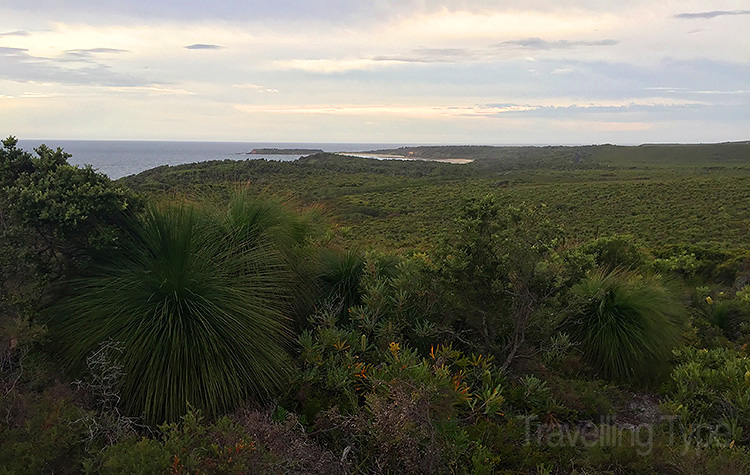
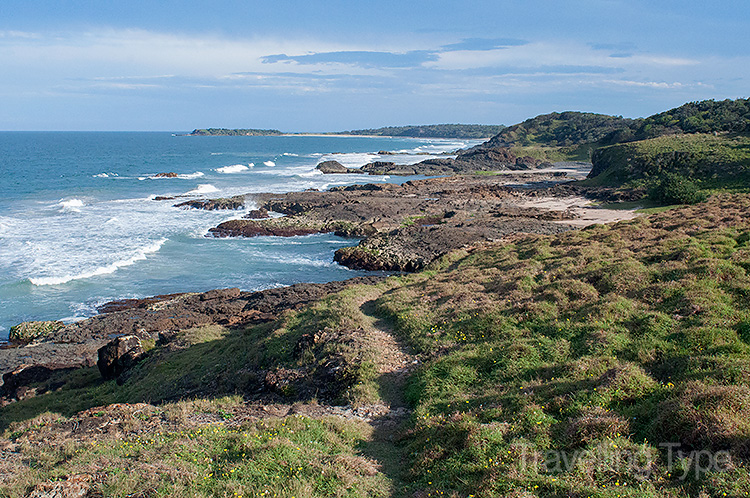
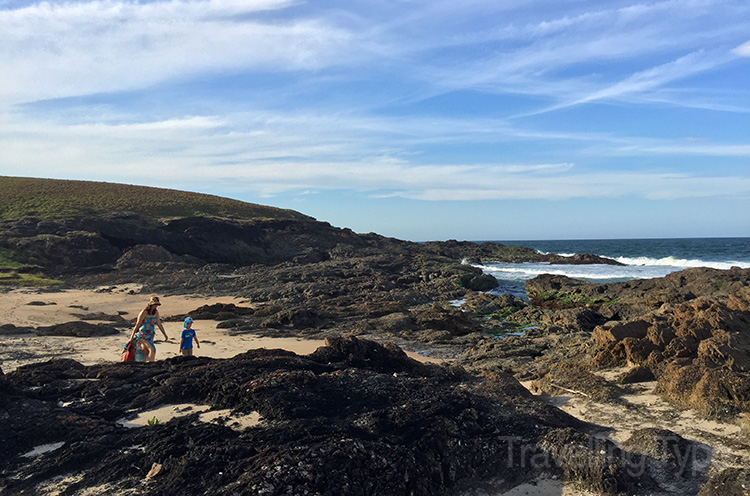

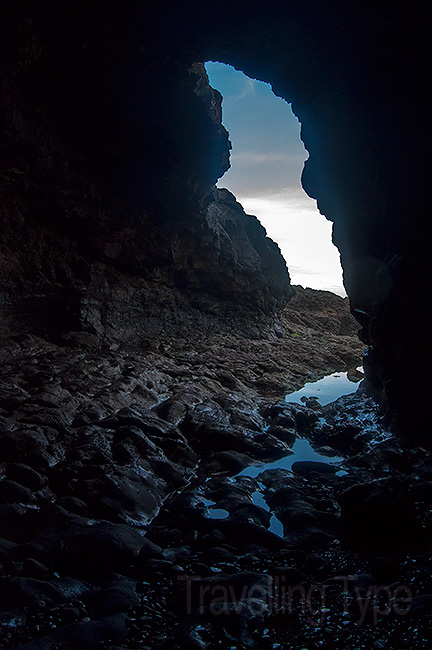

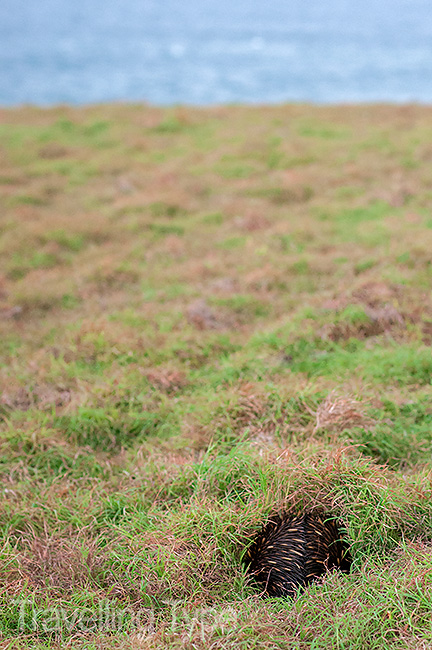
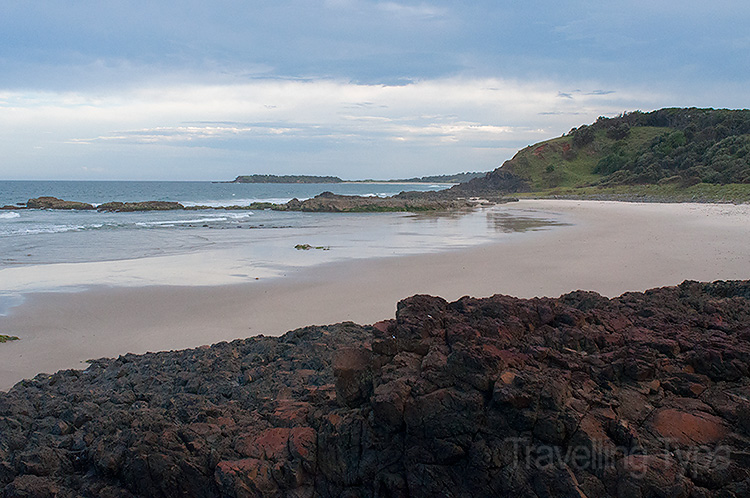
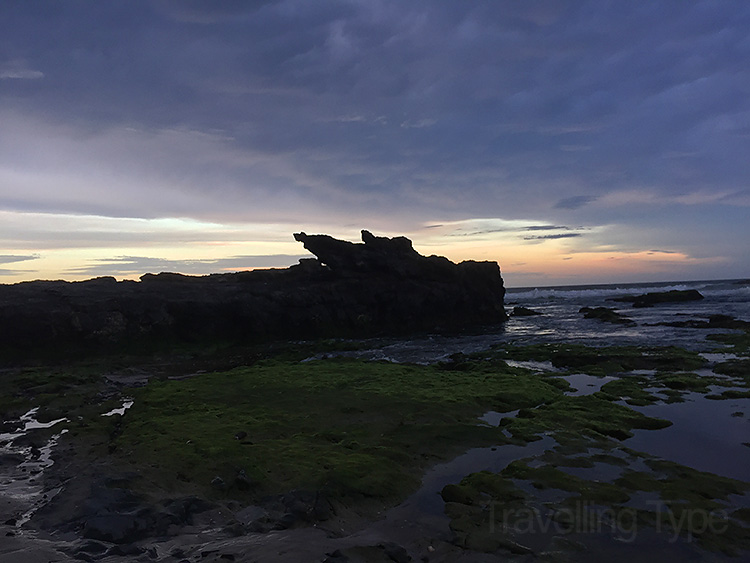
Hi Andy
Great Story we will be visiting Evans Head and the headland shortly great images
Thanks Gavin, it’s a great part of the world. I hope you enjoyed it!
Thanks for stopping by.
Hi,
I am an Indigenous worker at a local primary school here on the north coast of New South Wales. I was just curious where you sourced all this information from?
Thank-you,
Shataya
Hi Shataya,
It’s been nearly six years since I’ve written this, but you’ll notice I’ve posted links throughout the article to sources on the Aboriginal Dreamtime. The rest is taken from plaques at the site.
Cheers.